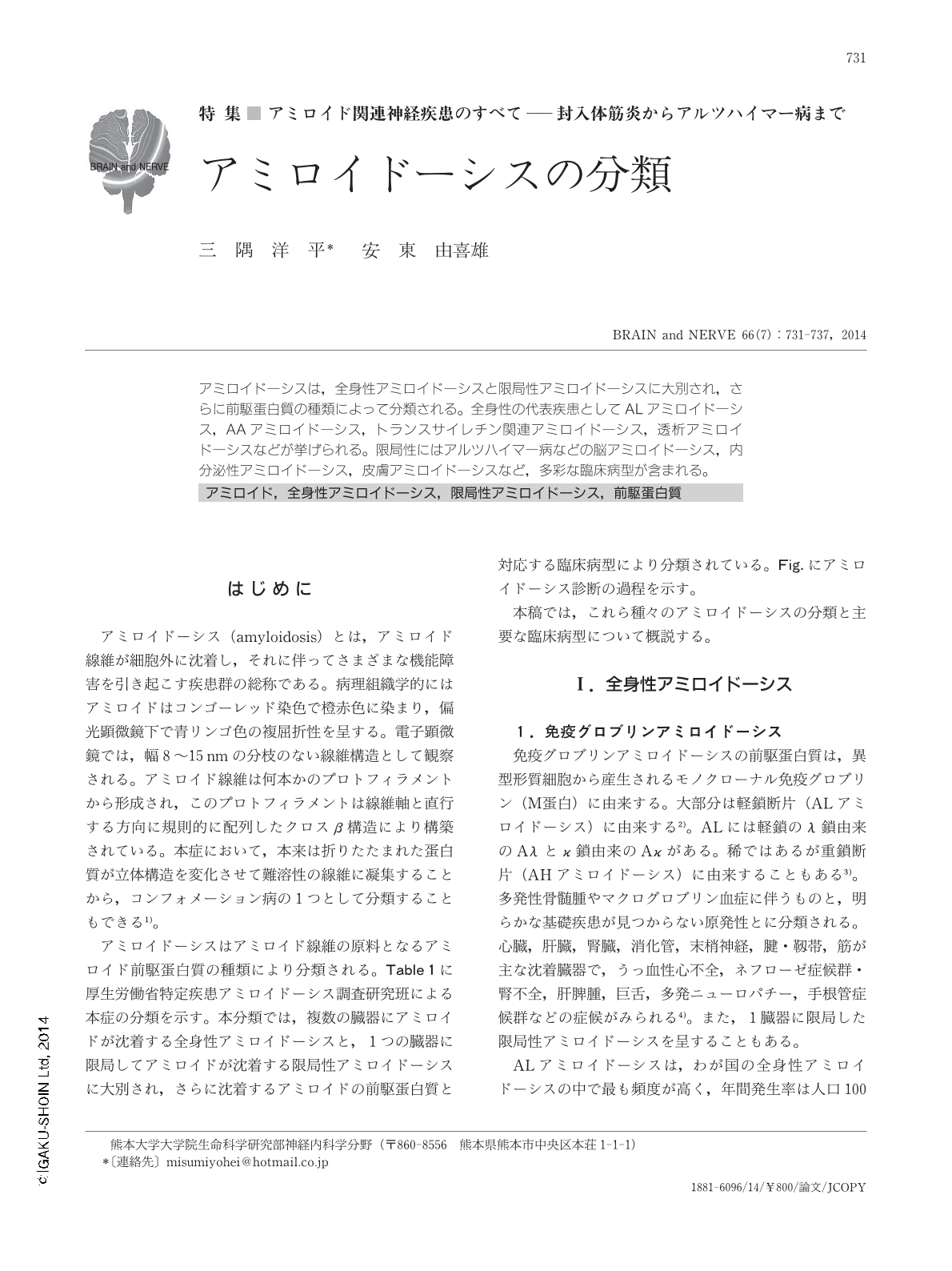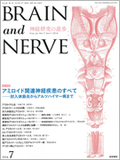Japanese
English
- 有料閲覧
- Abstract 文献概要
- 1ページ目 Look Inside
- 参考文献 Reference
アミロイドーシスは,全身性アミロイドーシスと限局性アミロイドーシスに大別され,さらに前駆蛋白質の種類によって分類される。全身性の代表疾患としてALアミロイドーシス,AAアミロイドーシス,トランスサイレチン関連アミロイドーシス,透析アミロイドーシスなどが挙げられる。限局性にはアルツハイマー病などの脳アミロイドーシス,内分泌性アミロイドーシス,皮膚アミロイドーシスなど,多彩な臨床病型が含まれる。
Abstract
Amyloidoses are a group of protein conformational diseases in which soluble precursor proteins form insoluble amyloid fibrils in the extracellular space. Amyloidoses are roughly classified in terms of their localized or systemic deposition, and are further grouped based on the types of precursor proteins. As of today, 27 different proteins have been recognized as amyloid precursor proteins. Amyloidoses are diagnosed by histopathological analysis using Congo red staining and/or electron microscopy, and the disease classification is made based on immunohistochemistry, proteomics, and gene analyses. The four main types of systemic amyloidosis are light-chain amyloidosis, reactive amyloid A amyloidosis due to chronic inflammatory diseases, β2-microglobulin amyloidosis associated with long-term hemodialysis, and hereditary transthyretin-related amyloidosis caused by mutations in the transthyretin gene. There are a many types of localized amyloidosis including cerebral endocrine, and cutaneous amyloidosis. In recent years, the treatment strategies for amyloidoses have greatly improved, and several forms of these are now treatable. Therefore, it is increasingly important to make an early diagnosis and begin treatment at the earliest, based on the precise disease classification of amyloidoses.

Copyright © 2014, Igaku-Shoin Ltd. All rights reserved.


